Showing Spotlights 137 - 144 of 338 in category All (newest first):
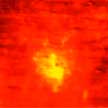 At the nanoscale, materials become exceedingly sensitive to external perturbations. This is quite a relevant factor for wearable and flexible applications, where materials would always bear a certain degree of variable strain/stress. So far it has been very difficult to characterize strain effects in 2D materials, which is crucial to understanding strain-matter interactions. Researchers demonstrate that this limitation can be overcome by using a technique based on Kelvin Probe Microcopy.
At the nanoscale, materials become exceedingly sensitive to external perturbations. This is quite a relevant factor for wearable and flexible applications, where materials would always bear a certain degree of variable strain/stress. So far it has been very difficult to characterize strain effects in 2D materials, which is crucial to understanding strain-matter interactions. Researchers demonstrate that this limitation can be overcome by using a technique based on Kelvin Probe Microcopy.
May 9th, 2018
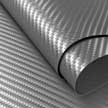 Today, the common engineering solution to manufacture carbon fiber reinforced plastic composite materials is based on cross-plied carbon fibers in a polymer resin requiring high temperature cure. In contrast, researchers now have demonstrated cross-linked graphene sheets that are manufacturable from graphene platelets, which are resin-free, processable at low temperature, and contain less than 10 wt.% additives. This advance provides a universal strategy for converting inexpensive graphene platelets into high performance polymer-free graphene sheets for the development of next-generation lightweight multifunctional materials.
Today, the common engineering solution to manufacture carbon fiber reinforced plastic composite materials is based on cross-plied carbon fibers in a polymer resin requiring high temperature cure. In contrast, researchers now have demonstrated cross-linked graphene sheets that are manufacturable from graphene platelets, which are resin-free, processable at low temperature, and contain less than 10 wt.% additives. This advance provides a universal strategy for converting inexpensive graphene platelets into high performance polymer-free graphene sheets for the development of next-generation lightweight multifunctional materials.
May 8th, 2018
 Carbon nanomaterials, including graphene-based materials, are widely gaining popularity in practical applications of nanomanufacturing. As a result, it becomes more and more likely that the unwanted introduction of such materials into the environment may occur. In particular, aqueous habitats might be severely affected by any accidental carbon nanomaterials exposure. Researching these potential environmental toxicity effects, scientists have found that kaolin, a cheap and abundant clay, can act as a powerful antidote to remediate the toxic effects of graphene oxide.
Carbon nanomaterials, including graphene-based materials, are widely gaining popularity in practical applications of nanomanufacturing. As a result, it becomes more and more likely that the unwanted introduction of such materials into the environment may occur. In particular, aqueous habitats might be severely affected by any accidental carbon nanomaterials exposure. Researching these potential environmental toxicity effects, scientists have found that kaolin, a cheap and abundant clay, can act as a powerful antidote to remediate the toxic effects of graphene oxide.
Apr 25th, 2018
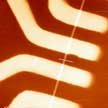 The advent of graphene resulted in a massive, world-wide, effort directed at investigation of other two-dimensional (2D) layered materials. One-dimensional (1D) bundled materials have received considerably less attention. Similar to the 2D layered materials with covalently bonded layers separated by the van der Waals gaps, the 1D materials consist of covalently bonded one-dimensional wires with van der Waals gaps between the wires. Researchers now have discovered that quasi-1D nanoribbons reveal an exceptionally high current density at the peak of the stressing DC current. This level of the current density exceeds that in any conventional metals like copper by almost two orders of magnitude.
The advent of graphene resulted in a massive, world-wide, effort directed at investigation of other two-dimensional (2D) layered materials. One-dimensional (1D) bundled materials have received considerably less attention. Similar to the 2D layered materials with covalently bonded layers separated by the van der Waals gaps, the 1D materials consist of covalently bonded one-dimensional wires with van der Waals gaps between the wires. Researchers now have discovered that quasi-1D nanoribbons reveal an exceptionally high current density at the peak of the stressing DC current. This level of the current density exceeds that in any conventional metals like copper by almost two orders of magnitude.
Apr 19th, 2018
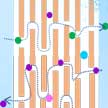 As a promising large-scale energy storage technology, redox flow batteries (RFBs) are attracting increasingly more research attention. For RFB separators, the essential requirement is achieving high ionic conductivity with minimal cross-over at low cost. Researchers now have demonstrated a proof-of-concept graphene oxide (GO) membrane as separator for large-scale energy RFBs. Their work shows that the two-dimensional nanochannel structure and low frictional water flow inside micrometer-thick GO laminates make this material an attractive candidate membrane for large-scale energy storage systems.
As a promising large-scale energy storage technology, redox flow batteries (RFBs) are attracting increasingly more research attention. For RFB separators, the essential requirement is achieving high ionic conductivity with minimal cross-over at low cost. Researchers now have demonstrated a proof-of-concept graphene oxide (GO) membrane as separator for large-scale energy RFBs. Their work shows that the two-dimensional nanochannel structure and low frictional water flow inside micrometer-thick GO laminates make this material an attractive candidate membrane for large-scale energy storage systems.
Apr 17th, 2018
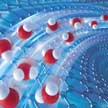 For most viscous liquids, the solid surface of surrounding channel walls poses friction resistance to the flowing liquid, causing a loss of velocity at the liquid/solid interface. As a result, for regular surfaces the energy required for nanofluidic applications is enormous because of the tremendous hydraulic resistance inside nanoscale conduits. A new technique to accurately measure the hydraulic resistance inside graphene nanofluidic channels makes increasing the efficiencies of most nanofluidic applications possible.
For most viscous liquids, the solid surface of surrounding channel walls poses friction resistance to the flowing liquid, causing a loss of velocity at the liquid/solid interface. As a result, for regular surfaces the energy required for nanofluidic applications is enormous because of the tremendous hydraulic resistance inside nanoscale conduits. A new technique to accurately measure the hydraulic resistance inside graphene nanofluidic channels makes increasing the efficiencies of most nanofluidic applications possible.
Mar 28th, 2018
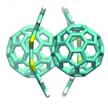 In new work employing the photostrictive effect, researchers have fabricated a flexible two-dimensional (2D) charge transfer molecular (sub-nanometer) nanosheet and observed a sizeable photostrictive effect of 5.7% with fast, sub-millisecond response; this is higher than that of some conventional ferroelectronics and polar semiconductors. This photostrictive effect arises from excess charge carriers induced lattice dilation and conformation change, which is higher than that of some conventional ferroelectronics and polar semiconductors.
In new work employing the photostrictive effect, researchers have fabricated a flexible two-dimensional (2D) charge transfer molecular (sub-nanometer) nanosheet and observed a sizeable photostrictive effect of 5.7% with fast, sub-millisecond response; this is higher than that of some conventional ferroelectronics and polar semiconductors. This photostrictive effect arises from excess charge carriers induced lattice dilation and conformation change, which is higher than that of some conventional ferroelectronics and polar semiconductors.
Mar 27th, 2018
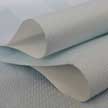 Imagine you are fast asleep in your bedroom when a fire breaks out somewhere else in your house. Fortunately, you have nanotechnology-enhanced wallpaper that detects the fire and automatically rings an alarm. Realizing this idea, scientists have developed a 'smart' wallpaper based on highly flexible fire-resistant inorganic paper embedded with ultralong hydroxyapatite nanowires that serve as the substrate and graphene oxide as the thermosensitive sensor.
Imagine you are fast asleep in your bedroom when a fire breaks out somewhere else in your house. Fortunately, you have nanotechnology-enhanced wallpaper that detects the fire and automatically rings an alarm. Realizing this idea, scientists have developed a 'smart' wallpaper based on highly flexible fire-resistant inorganic paper embedded with ultralong hydroxyapatite nanowires that serve as the substrate and graphene oxide as the thermosensitive sensor.
Mar 21st, 2018
 At the nanoscale, materials become exceedingly sensitive to external perturbations. This is quite a relevant factor for wearable and flexible applications, where materials would always bear a certain degree of variable strain/stress. So far it has been very difficult to characterize strain effects in 2D materials, which is crucial to understanding strain-matter interactions. Researchers demonstrate that this limitation can be overcome by using a technique based on Kelvin Probe Microcopy.
At the nanoscale, materials become exceedingly sensitive to external perturbations. This is quite a relevant factor for wearable and flexible applications, where materials would always bear a certain degree of variable strain/stress. So far it has been very difficult to characterize strain effects in 2D materials, which is crucial to understanding strain-matter interactions. Researchers demonstrate that this limitation can be overcome by using a technique based on Kelvin Probe Microcopy.
 Subscribe to our Nanotechnology Spotlight feed
Subscribe to our Nanotechnology Spotlight feed





